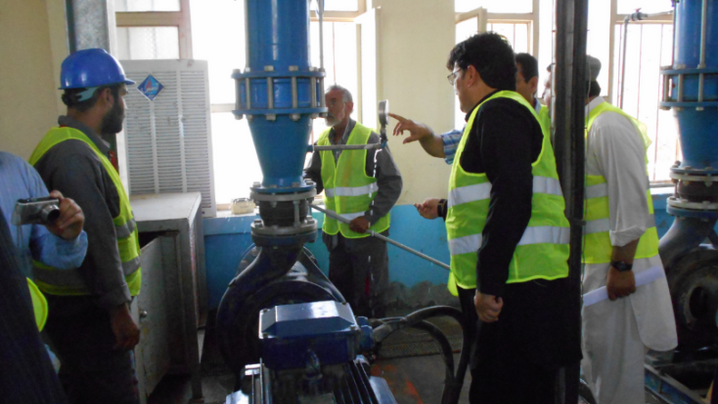
Water utilities can present communities with some important challenges. Two of these challenges are keeping the cost of water affordable and controlling the usage of water by residents. Recently, two innovative approaches to these issues have been undertaken by the city of Santa Fe, New Mexico, and the city of Philadelphia, Pennsylvania. The two cities serve as case studies for how best to manage the cost of water as well as the use of water.
In the case of Philadelphia, one of the issues that the city is struggling with is nonpayment of water bills by low-income residents. According to an article in Governing magazine, 40 percent of the city's water utility customers fail to pay their water bill in a timely fashion. This has led to an estimated $242 million of uncollected revenue for the city. Philadelphia's solution to this problem is to tie the household water bill to the resident's income. This means that households at or below 150 percent of the federal poverty line pay lower water bills than higher-earning customers. The idea behind this plan is to encourage the low-income residents to pay their water bills and pay them on time by making the fees more affordable. This is a novel approach to rectify the issue of delinquent water bills, something worth watching to see how well it succeeds.
In contrast to the case of Philadelphia is Santa Fe. Here the issue isn't about revenue but actually the literal amount of water the city has to consume. Because of the climate of the Santa Fe region, drought is a concern. Therefore, to create a more sustainable water supply, Santa Fe created a pricing system that penalizes high water usage. In order to make this pricing system work, however, Santa Fe needed to invest in such smart technologies as real-time water meters that allow residents to actively monitor their water usage and control costs. This merging of innovative policy and smart technology has led to a significant decrease in the city's water usage, with an average daily use of 88 gallons per person per day compared to the national average of 150 gallons per person per day. (This case will be in an upcoming ICMA e-book that will be published August 1st. More information to come)
Examples like these show how communities across the country face a diverse set of challenges and are finding new and innovative ways of addressing these challenges. ICMA recognizes that issues around water and water treatment are important, therefore it has created resources that can help local governments deal with this important issue. Also, at the upcoming ICMA Annual Conference, October 22-25, there will be a field demonstration of the San Antonio Desalinization Plant and a special session further exploring smart cities and innovative policy in the area of water and wastewater services.
Further reading from ICMA on water and wastewater management:
Leadership ICMA 2016 Capstone Report: Nutrient Reduction Program Cost Benefit Analysis. A cost benefit analysis for integrated water management in Iowa. This analysis was completed by Leadership ICMA.
Centennial Plaza – A Demonstration of Water Sustainability. A report on the winning program for the 2016 ICMA Local Government Excellence Awards in the category of Community Sustainability (populations of less than 10,000).
Will the Nation’s Water Infrastructure Needs Be Overlooked Again? A blog post on water infrastructure and funding.
Improving Quality of Life: The Effect of Aligning Local Service Delivery and Public Health Goals. A report that seeks to advance the conversation about viewing and managing general local government infrastructure.
New, Reduced Membership Dues
A new, reduced dues rate is available for CAOs/ACAOs, along with additional discounts for those in smaller communities, has been implemented. Learn more and be sure to join or renew today!
